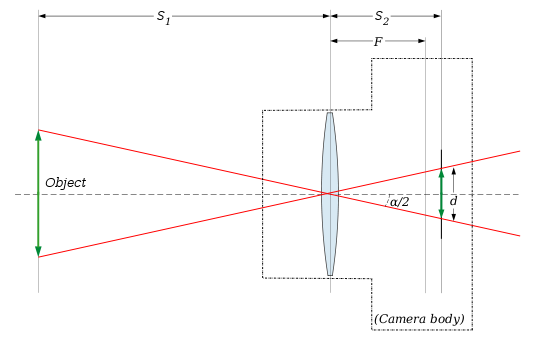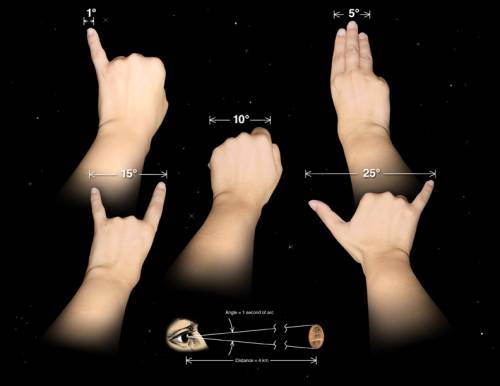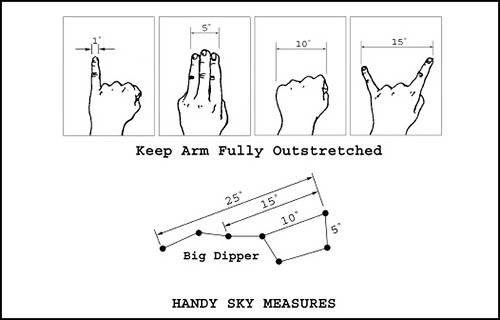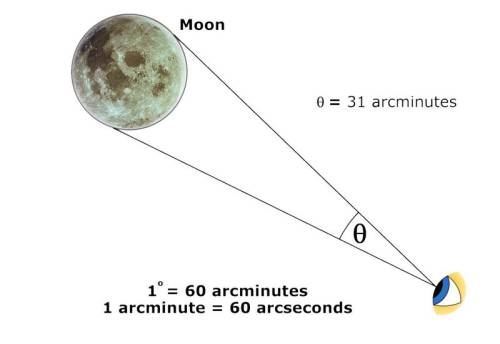Intro to Focal Length
Note:
- all focal length mentioned below are in term of 35mm film equivalent focal length;
- thus if you use a smaller format camera, you times your crop factor to get the 35mm film equivalent focal length; Eg. for m43 camera, you times 2
- thus if you use a larger format camera, you divide your crop factor to get the 35mm film equivalent focal length; Eg. for 645 medium format, you divide roughly 1.5
Fisheye Lens
- There are 2 types of fisheye
- Circular Fisheye lens, normally cover 180 degree in both vertical and horizontal, and image only cover the circle area of image area while with dark area around edge
- normally around 8mm (35mm film equivalent focal length)
- Full frame Fisheye lens, normally only cover 180 degree in horizontal, and image cover the full image area
- normally range from 12mm to 16mm (35mm film equivalent focal length)
- Characteristic of wide angle lens photo
- the significant difference between fisheye range focal length photos and other focal length photos are the off-center-axis curvature distortion of straight lines;
- that means only the straights lines crossing lens center point will keep straight looks
- all parellel lines will converge at the the sphere edge of full fisheye image area.
- circle and oval in the fisheye stays as circle and oval.
- Applications of Fisheye
- capture fun of the event environment, and people all around
- capture full area of sky and landscape
- capture people/subjects and all the environment behind them.
- additional reading: Not all fisheye looks the same
- different fisheye projection types: http://michel.thoby.free.fr/Fisheye_history_short/Projections/Various_lens_projection.html
Wide Angle Lens (14-28mm)
- wide angle lens are range from 14mm to 28mm
- Characteristic of wide angle lens photo
- stronger perspective distortion than how our normal human eye see the world; (of course other animals may see wider than human beings); which means the Front subjects looks extremely bigger than the subjects at the Back, and subjects at the Back looks extremely smaller than the Front subjects.
- all straight lines in real world will stay straight (in case of ideal pefectly designed rectlinear lens with no physical human design caused extra image distortion - lens distortion)
- also parallel lines in real world that not perpendicular to lens center light path will look more extremely unparallel, and quickly converge into the vanishing point at the horizon. while parallel lines that are perpendicular to lens center light path will stay parallel (in case of ideal pefectly designed rectlinear lens with no physical human design caused extra image distortion - lens distortion)
- also circle and oval will looks more unevenly stretch near the edge of photo, and the nearer to the edge, the more stretched the circle and oval will get; thus, circle and oval will not even be idea oval shape, more like water drop shape towards the edge.
- also, it is also possible to convert fisheye (curvilinear) photo into rectilinear wide angle photo (either physically corret conversion or artist desired conversion)
- Application of wide angle lens:
- make small space looks extreme spacious
- make Front subject more impact against background
- capture event and environment in a more human visual way comparing to fisheye lens
Normal Lens (35-70mm)
- of course, so-called normal lens is refering to how human eye normally see subjects around the environment, as the perpective look is more human see things, such as the front subject vs back subject size difference in the captured image area; thus, normal lens is normal to human only, other animal may not look the same way.
- characteristics of normal lens photo:
- no perspective impact, and natural representation of the subjects to our human perception.
- thus, more pleasant to showcase our daily life and everyday subjects.
- most prime lens design from this range onwards has almost zero lens distortion, and subject will likely keep their shape in the whole image area.
- Application of normal lens:
- showcase of normal subjects in the normal way.
Telephoto Lens (85mm to 300mm)
- Telephoto lens are range from 85mm to 300mm
- Characteristic of telephoto lens photo:
- even less perspective presents in the image, and the perception of distance and space start to disappear.
- more isolation of subjects from environment due to the narrow viewing angle of the telephoto lens (small Angle of View)
- depth of field also become narrowed, background becomes more out of focus (more Bokeh)
- also make subjects at distance appear larger/closer than how our eye normally see.
- Application of telephoto lens:
- isolation and emphasis on subjects against environment
- capture distant subject
- get closer look of subject when our human eye see things
Super Telephoto Lens (300mm to 800mm)
- Super Telephoto lens are range from 300mm to 800mm
- Characteristic of super telephoto lens photo:
- space and distance perception reference are gone, since extremely less amount of environment is in focus or captured within image area (due to extremely smaller angle of view and extremely narrow depth of field)
- subjects look more surrealistic as it looks more like floating in space and time, freezed and seperation from our world.
- make subjects at great dsitance appear larger/closer than what we can imagine normally
- Application of super telephoto lens:
- capture distant subject
- great isolation and emphasis of subjects
Special Ability or add-on Feature of the Lens
Macro and Close-up ability
- macro and close-up ability: ability to see things very close to the front of the lens (like short-sight human eyes)
- the close-up/macro ability are measured in term of magnification ratio - the captured subject size on image area divived by the real world subject size
- only lens with magnication ratio larger than 1:4 are offically called Macro lens
- Lens at all focal length can have this ability by adding extension tube or front macro/closeup filter
- Macro Lens can be any focal length, some common ones are like 50mm 1:1 macro, 100mm 1:1 macro, 180mm 1:1 macro; while wide angle macro lens has like 15mm 1:1 macro, 35mm 1:1 macro
- However, any focal length can be turned into Macro lens by adding rear extension tube, or adding front macro/closeup filter.
- Application of macro/closeup ability
- make extreme small subject look normal or huge size to our human eye
- capture close up subject
- most normal focal length can't see things clearly within 30cm
- most telephoto lens are far-sight, and can't see clearly within 1-2 meters
- most super telephoto lens are extreme far-sight, and can't see clearly within 5 meters mostly
Tilt and Shift ability
- Tilt and Shift ability: lens's position and rotation with relation to image capturing area can be changed
- Application of Tilt and Shift ability
- shift ability: change perspective vanishing point, thus control line direction captured
- tilt ability: make gradient difference of focus distance acrosing image area,
- so different image area can have different distant subjects all clearly in focus at same time;
- or different image area can have same distant subjects Not all in focus at the same time
- all focal length can have tilt shift ability
- those who have this feature built-in are called tilt shift lens (tilt or shift or both)
- other lens can have this ability by using a title shift adapter and a smaller format camera
- Eg. use 35mm format DSLR lens on m43 camera with tilt-shift adapter
- additional reading:
- using bigger format lens on a small format camera and a bellow mount system, and that adds extra ability to tilt and shift the image area plane as well; which are quite common in large format photography.
Focal Length Extend and Reduce ability
Focal Length Extend ability:
- ability to extend/increase the focal length of the lens;
- rear focal length extender (teleconvertor):
- How rear extender work: it magnified the center portion of lens image area and projected to the same capture image area, thus, it behaves like digital zoom inside camera, it enlarge portion of the image at loss of original image quality, as light pass through additional glass.
- rear focal length extender's ability is measured in term of “Multiplier”: common ones are 1.4x, 1.7x, 2x, 3x. which multiply the focal length and aperture of the lens; like 200mm f4 lens with 2x teleconver behaves like 400mm f8 lens with same minimum focus distance.
- rear extender type:
- built-in:
- few photography lens has extender built-in, and almost are for telephoto lens, such as Canon EF 200-400mm f/4L IS USM Lens with Built-in 1.4x;
- rest this kind of built-in extender lens are television lens for covering sports broadcasting.
- standalone extender type :
- mount at rear of the lens, almost all focal length can use this type, functioning same as those built-in extender but are built seperated.
- High quality teleconvertors are normally built specifically to match certain good quality telephoto lens.
- front focal length extender (front teleconveror):
- front focal length extender are mainly for fix lens cameras, or as cheaper alternative for low end lens.
- How front extender work: it mounts on the filter thread of the lens, and it behave like telephoto lens itself, it captures narrow angle of view and pass it to the lens next, and the lens itself behave like a rear extender. The front extender's quality directly influence the final image.
- front focal length extender's ability is measured in term of “Multiplier”: common ones are 1.4x, 1.7x, 2x, which only multiply the focal length of the lens; like 200mm f4 lens with 2x front teleconveror behaves like 400mm f4 lens.
- Application of focal length extender
- increase reach of the focal length at loss of image quality (both lens and extender quality matters)
Focal Length Reduce ability:
- ability to reduce the focal length of the lens;
- rear focal length reducer (speed booster):
- to do
- front focal length reducer (wide angle convertor):
- to do
- anamorphic front convertor (1.33x Anamorphic Adapter):
- basically a wide angle convertor in horizontal area only
- to do
Focal Length related Charts and Calculators
Crop Factor
- Base the graph of field of view calculation
- Focal length is proportional to the film/sensor width and heights for same field of view.
- Thus,
- for 2x factor, focal length is 2x of orignal, then film/sensor width and heights are 1/2 of original.
- for digital cropping, shrink the width and height by 1/x, the focal length is increased to x times.
- Focal length to image area size (35mm film equivalent crop factor) calculator and chart
Angle of View (Field of View)
- Focal length to angle of view (field of view) calculator and chart
Depth of Field
- Focal length and Aperture to depth of field (Bokeh) calculator and chart
Magnification Ratio
- Focal length and Focus Distance to magnification ratio calculator and chart
Effective Focal Length with Focus Breathing
- some lens using extension method to move whole lens group forward and backward to focus, the effective focal length stays more or less than same (< 1mm diff), (like those cinema lens)
- ref: (XEEN 35mm Lens Breathing Test): https://youtu.be/YcpLAk34fkk?t=142
- Those prime and zoom lens using floating element focus (which moves only a group section of lens) to achieve focus, the effective focal length can change quite a lot (>10mm - 50mm) as the focus pulling. (the changing amount increase as focusing closer)
- ref: (Focus breathing - Nikon Holy Trinity): https://youtu.be/tz8lbCrLBEs?t=109
- floating design make lens size stay more or less the same as focusing.
- the breathing effect may not affect normal still photo much, but for video, the focal changing effect do make noticeable.
- but for still photo, if you want to stack multiple focus distance shot together to get wide depth of field. then no breathing will make it easier, though photoshop like stack software can handle the difference, but result may vary.
- study article: https://photographylife.com/focus-breathing
- in which, the design of Nikkor 70-200 f2.8 E is better than its pre 70-200mm VR II on minimize breathing effect. the Z mount version of 70-200 is even better on minimize breathing due to different priority in design
- normally, the breathing effect wil shorten the focal length as it is getting focus closer, while those keep focus length longer will reach more, and give more Magnification ratio (make subject look large on sensor when standing at same spot)
- generally, thus the same focus length's lens give More Magnification Ratio (at same focus distance, as mag ratio changes as focus distance changes, common MFD - lens when focus closest posible focus distance gives big mag ratio), then the less breathing it has.
Getting too Technical - the Thin Lens and Thick Lens Model Formula
- short note is: lens symmetry or lens modeling method are the key leading to different theoretical calculation result.
- note: different calculation may give different result, but if all lens calculation using same formula, you can still get a sense of their same level comparison on focus breathing.
- a forum discussion on that using one of the calculation method: https://www.dpreview.com/forums/thread/4123592
- one of the code
FoV = Field of View in degrees Sw = Width of sensor in m (0.036 for FF) Fl = Focal Length in m (so 0.2 for 200mm lens) FoV of 100mm lens on FF sensor: 2 * atan (0.036 / (2 * 0.100)) = 20.4079 degrees from FoV to Fl: 0.036 / (2 * tan(20.4079 / 2)) = 0.1 m Width of field D = Distance to measure width at (measured from sensor plane) L = Measured width of field at distance D (in same units as D, m) L = 2 * D * tan(FoV / 2) ---- at 10m: L = 2 * 10 * tan(20.4079 / 2) = 3.6m (fill the frame horizontally at 10m) MFD = Minimum Focus Distance, measured from sensor (in same units as L,D,Sw so say m) MaxMag = Maximum magnification, how big an object is on sensor wrt real life (as a ratio) Lmfd = Field Width at MFD Lmfd = 2 * MFD * tan((2 * atan (Sw / (2 * Fl)))/ 2) Lmfd = Sw / MaxMag ====== Sw / MaxMag = 2 * MFD * tan((2 * atan (Sw / (2 * Fl))) / 2) ====== Fl = 1 / (2 * (tan((2 * atan(Sw / (MaxMag * 2 * MFD))) / 2) / Sw)) ======================= Example 1: Nikon 70-200 f2.8 II: MFD = 1.4, MM = 0.12 Fl = 1 / (2 * (tan((2 * atan(0.036 / (1.4 * 2 * 0.12))) / 2) / 0.036)) = 0.168m
- more optical formula: https://www.mhohner.de/formulas.php
- I can't handle any more, lol; The Best is measure in real lens photo shoot compare, https://www.youtube.com/watch?v=XP5-e4Q01Ac
- more 70-200mm lens compare: https://www.pentaxforums.com/forums/10-pentax-slr-lens-discussion/315854-dfa-70-200-f-2-8-focus-breathing.html
- more data effective focal length calculation data: https://www.pentaxforums.com/forums/8-pentax-film-slr-discussion/334511-calculated-focal-length-mfd-focus-breathing.html
- it use
Effective focal length (at minimum focus distance) = Minimum focus distance [mm] / (Maximum reproduction ratio + (1/(Maximum reproduction ratio)) + 2) ------------- DA 16-85mm MFD = 350mm Max reproduction ratio = .26 Focal length = 350 / (.26 + (1/(.26)) + 2) = 57mm DA 18-135mm MFD = 400mm Max reproduction ratio = .24 Focal length = 400 / (.24 + (1/(.24)) + 2) = 62mm A 135mm f2.8 MFD = 1200mm Max reproduction ratio = .15 Focal length = 1200 / (.15 + (1/(.15)) + 2) = 136mm DA 18-270mm MFD = 490mm Max reproduction ratio = .26 Focal length = 490 / (.26 + (1/(.26)) + 2) = 80mm DA* 50-135mm F2.8 124 mm DA*60-250mm MFD = 1100mm Max reproduction ratio = .15 Focal length = 1100 / (.15 + (1/(.15)) + 2) = 125mm DFA*70-200mm MFD = 1200 Max reproduction ratio = .13 Focal length = 1200 / (.13 + (1/(.13)) + 2) = 122mm Tamron 70-200mm F2.8 Macro MFD = 950 Max reproduction ratio = .32 Focal length = 950 / (.32 + (1/(.32)) + 2) = 174mm Canon EF 70-200 f2.8 III MFD = 1200 Max reproduction ratio = .21 Focal length = 1200 / (.21 + (1/(.21)) + 2) = 172mm Nikon 70-200 VR MFD = 1100 Max reproduction ratio = .21 Focal length = 1100 / (.21 + (1/(.21)) + 2) = 157mm Nikon 70-200 VR II MFD = 1400 Max reproduction ratio = .12 Focal length = 1400 / (.12 + (1/(.12)) + 2) = 134mm Nikon 70-200 E MFD = 1100 Max reproduction ratio = .21 Focal length = 1100 / (.21 + (1/(.21)) + 2) = 157mm Nikon S 70-200 Z MFD = 1000 Max reproduction ratio = .2 Focal length = 1000 / (.2 + (1/(.2)) + 2) = 138mm Sony GM 70-200 MFD = 960 Max reproduction ratio = .25 Focal length = 960 / (.25 + (1/(.25)) + 2) = 153mm RF 70-200 MFD = 700 Max reproduction ratio = .23 Focal length = 700 / (.23 + (1/(.23)) + 2) = 106mm Tamron G2 70-200 MFD = 960 Max reproduction ratio = .16 Focal length = 960 / (.16 + (1/(.16)) + 2) = 114mm DA 55-300mm WR MFD = 1400mm Max reproduction ratio = .28 Focal length = 1400 mm / (.28 + (1/(.28)) + 2) = 239mm DA 55-300mm PLM MFD = 950mm Max reproduction ratio = .3 Focal length = 950 mm / (.3 + (1/(.3)) + 2) = 169mm DA*300 MFD = 1.4 m = 1400mm Max reproduction ratio = 1:4 = .25 Focal length = 1400 mm / (.25 + (1/(.25)) + 2) = 224mm DFA 150-450mm MFD = 2000mm Max reproduction ratio = .22 Focal length = 2000 / (.22 + (1/(.22)) + 2) = 296mm Sigma 150-500mm MFD = 2.20 m = 2200mm Max reproduction ratio = .19 Focal length = 2200 / (.19 + (1/(.19)) + 2) = 295mm
Before Reading
for (distance, angle of view, equivalent 135 format focal length) Angle of view calc for different format (like 75mm on 6×6 camera is like 50mm on full frame camera)
- Focal length
Angle of View per Focal Length (135 format)
| Hand Measure | forearm blend front | 20 | 24 | 28 | 30 | cow stretch | cow pose=25 deg | 1 fist=10 deg | 3 finger for 5 deg fr 300mm | (1 finger for 1 deg fr 800mm) | ||||||||||
|---|---|---|---|---|---|---|---|---|---|---|---|---|---|---|---|---|---|---|---|---|
| Focal Length (mm) | 8 | 14 | 18 | 20 | 24 | 28 | 30 | 35 | 50 | 85 | 90 | 135 | 200 | 300 | 400 | 600 | 800 | 1200 | 1600 | 2400 |
| Horizontal (°) | 132.08 | 104.26 | 90.01 | 83.98 | 73.75 | 65.48 | 61.93 | 54.44 | 39.6 | 23.92 | 22.63 | 15.19 | 10.29 | 6.87 | 5.16 | 3.44 | 2.58 | 1.72 | 1.29 | 0.86 |
| 1.5x APSC (mm) | 12 | 21 | 27 | 30 | 36 | 42 | 45 | 52.5 | 75 | 127.5 | 135 | 202.5 | 300 | 450 | 600 | 900 | 1200 | 1800 | 2400 | 3600 |
| 1.5x horizon | 112.63 | 81.21 | 67.39 | 61.93 | 53.14 | 46.4 | 43.61 | 37.86 | 27 | 16.08 | 15.19 | 10.16 | 6.87 | 4.59 | 3.44 | 2.3 | 1.72 | 1.15 | 0.86 | 0.58 |
| Vertical (°) | 112.63 | 81.21 | 67.39 | 61.93 | 53.14 | 46.4 | 43.61 | 37.86 | 27 | 16.08 | 15.19 | 10.16 | 6.87 | 4.59 | 3.44 | 2.3 | 1.72 | 1.15 | 0.86 | 0.58 |
| Diagonal (°) | 139.42 | 114.19 | 100.49 | 94.51 | 84.07 | 75.39 | 71.6 | 63.45 | 46.8 | 28.57 | 27.04 | 18.22 | 12.35 | 8.25 | 6.2 | 4.14 | 3.1 | 2.07 | 1.55 | 1.04 |
- So, to Edge-Touch the Moon, you need at least 2400mm equiv. focal length (about 0.5 degree).
The system of angular measurement used by astronomers is based on divisions of the circle. The circle is divided into 360 degrees. Degrees are divided into 60 minutes of arc, or arc minutes, and each minute is divided into 60 arc seconds. The accompanying illustration shows how you can use your hand to make rough estimates of angular sizes. At arm’s length, your little finger is about 1 degree across, your fist is about 10 degrees across, etc. (http://astrofix.net/2010/03/19/85/)
telescope formulas
telescope formulas: (ref: http://www.astro-tom.com/technical_data/useful_formulas.htm)
- Magnification = Objective Focal Length / Eyepiece Focal Length
- Example: A 2000 mm focal length telescope using a 20 mm eyepiece yields a magnification of 100 times:
- Example: Magnification = 2000 mm / 20 mm = 100
- True Field of View = Eyepiece Apparent Field of View / Magnification of view
- Example: If we are still using the 20 mm eyepiece from the previous example on the same telescope, and we know from looking up in the manufacture's specifications that the eyepiece has a 50 degree 'apparent field of view':
- Example: True Field of View = 50 / 100 = 1/2 degree
- f/number = Objective Focal Length / Objective Diameter
- Example: A 2000 mm focal length telescope that has 200 mm (8 inch) diameter yields a value of f/10.
Related Calculation Programming
- javascript Field of View calculator
// ref: http://www.tawbaware.com/maxlyons/calc.htm // excel : fovh=ROUNDUP((2*ATAN($filmWidth/(2*FocalLength))*180/3.1415),2) // PI ~ 3.1415 function dec1(aNumber) {return (rnd(aNumber,1));} function compute_fov() { var film_width = 36; var film_height = 24; var film_diag; var f = document.fov_calculator; var flen = f.flen.value; var flen_mult = f.flen_mult.value; if (isNaN(flen_mult) || flen_mult<=0) { f.flen_mult = 1; flen_mult = 1; } //Account for focal length multiplier (actually, a film/sensor size multiplier) film_width = film_width/flen_mult; film_height = film_height/flen_mult; film_diag = (Math.sqrt((film_width * film_width) + (film_height * film_height))); var fov_h = (2 * Math.atan(film_width / (2 * flen)) * 180 / Math.PI); var fov_v = (2 * Math.atan(film_height / (2 * flen)) * 180 / Math.PI); var fov_d = (2 * Math.atan(film_diag / (2 * flen)) * 180 / Math.PI); f.fov_h.value = dec1(fov_h); f.fov_v.value = dec1(fov_v); f.fov_d.value = dec1(fov_d); }



